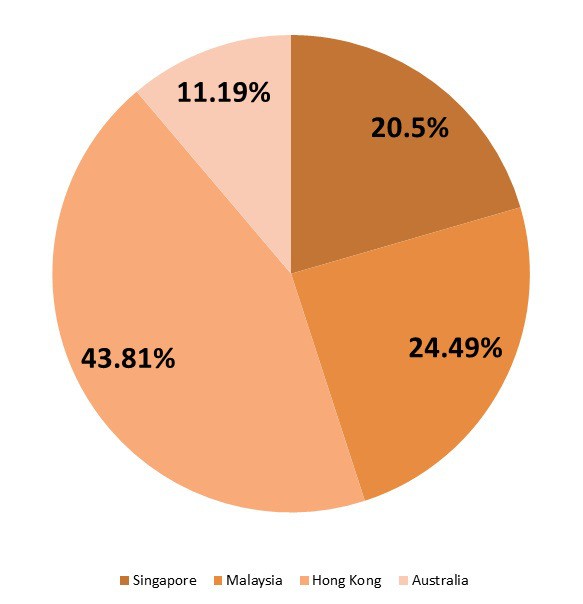Step By Step Guide To Start Investing ValueEdge
Post on: 19 Август, 2015 No Comment

Sui Chuan March 12, 2015 4 comments
A question I’m commonly asked is “how can I start investing?” You may have heard your friends enjoying their dividend income, or making big bucks off the forex market and you would like a piece of that action. However, for someone who has absolutely no knowledge of finance, it can be a pretty intimidating affair. You have no idea where to start – you don’t know the difference between investing and trading, you pronounce TA (T-A) as “TAH”. If that sounds like you, then I hope this article will be able to give you a little nudge in the right direction.
Step 1 – Technical or Fundamental
I believe this should be a starting place for anyone who is interested in investing. Technical analysis and fundamental analysis are the two main schools of thought that govern the style of investing. As a very perfunctory introduction, technical analysis is the study of patterns on price charts. The main belief is that historical patterns tend to repeat themselves, allowing for profits to be made. Fundamental analysis, on the other hand, is the study of financial information and the underlying business performance in order to determine an accurate value for a particular product. In the interest of readability, I have summarised the main differences between technical and fundamental analysis.
However, I urge anyone who is serious on starting to research in greater detail over the internet in order to better understand the distinction between the two.
Step 2 – More research on specific strategy
Once you have settled on your broad investment style (technical vs fundamental), it is time to drill down to the specific strategies that will actually help you start making money. Yes, even after deciding between technical and fundamental, there are still many different styles of trading and investing. Traders and investors typically start with one strategy and usually only end up specialising in a handful of strategies. The table below lists the more common strategies under each school.
Once again, this is merely to provide a starting point and you will definitely need to do more research to determine which is most appropriate for yourself. Lastly, while there are many different sub-strategies, there is still some commonality within the schools technical analysts have to know how to read bar price charts, understand the concept of margins while fundamental analysts should be acquainted with common accounting terms and concepts.
Step 3 – Choosing your asset class
Theoretically speaking, your strategy should be applicable to a variety of asset classes, so there is a need to choose the specific asset class that you want start with. Not every strategy will work with every asset class, and each asset class has its own unique advantages and disadvantages which have been summarised below.
That being said, certain strategies will be more suitable for certain asset classes. For example, technical analysis is more often used with currencies rather than stocks because of its unmatched liquidity and velocity of price changes. Conversely, it is also significantly more difficult to conduct effective fundamental analysis on currencies than stocks because of its complexity (you may need an Economics degree for that). Therefore, your degree of freedom is limited to a certain extent in your choice of asset class, depending on your strategy.
Step 3b – Trial period (Optional)
You have done your homework on your strategy and all that’s left is to throw in some money to take a position. But before you take the plunge, there is an additional step you can consider taking – running a paper portfolio. This means testing out how your judgement pans out without actually taking an actual position, as a form of practice. The most straight forward way is to just record on paper the trades that you intend to make and monitoring the transaction. Of course, there are platforms which are able to do this electronically through their demo accounts. CMC Markets is one with such a feature and I’m sure there are many others which offer this feature as well. There are limitations to how representative a paper portfolio is though; as everything is make-believe, there is a tendency to be more cavalier than you would be in reality.
Step 4 Establishing the necessary platform

In order to make your first trade/investment, you will need the necessary platform. The choice of platform largely depends on the asset class you wish to purchase and their commission rates. We will do a brief explanation for the different platforms for the 2 most popular asset classes – currency and stocks.
In order to purchase and hold shares, you will need 2 accounts – a custodian account to store the shares and a trading account which allows you to buy shares. Most brokers (companies that operate trading accounts) do not provide custodian services (Standard Chartered is one exception), so the most prevalent custodian account is the one operated by SGD called the Central Depository (CDP) account. To open the 2 accounts, all you have to do is to head down to a brokering firm as they will also usually assist you in opening your CDP account. Do check with the specific brokers the documents you need to prepare before hand – this usually includes an income statement or savings account statement to prove you actually have some money. Now, how do you choose a broker? For most people, the main consideration is their commission rates.
Besides fees, there are other factors to consider. For example, the table above represents only the fees for online trading in Singapore. If you want a broker to execute your trades for you, then the rates will be different and the table above won’t be relevant. Different brokerages also have different accessibility and rates for different markets. 1 broker might offer the best rates for the Singapore markets but another might have better rates in the Hong Kong market. Another consideration would be age – the minimum age to open a CDP account is 18 years old. However, the minimum age for most trading accounts is 21 years old, with the exception of POEMS which is 18 years old.
For currencies:
I have to admit that my knowledge in currency trading platform is relatively limited. Trading in currencies requires a different type of trading platform from stocks as leverage is often utilised. Timeliness is also another reason; trades in currency tend to be of shorter duration as compared to stocks, necessitating more frequency data feeds. Nevertheless, commission rates are similarly an important consideration for such platforms, only this time it is called spread. The spread differs between currency pairs, with the most commonly traded pair tending to have the lower spread. Spreads might differ marginally across various platforms. The amount of leverage (based on asset class) permitted is also a differing factor between platforms but always remember that high rewards often come with high risks. Lastly, such trading platforms are often more versatile as they allow you to trade a variety of asset classes, including stocks, futures and commodities. The main difference, especially for stocks, is that you are betting on a change in price without actually owning the underlying product (termed as Contract for Difference). While this results in lower capital outlay, one implication –using stocks as an example – is that you will not be entitled to any dividends as you do not actually partake in the ownership of the company. Some names of the more commonly used trading platforms:
With that, you are now set to start trading/investing!
Step 5 – Review, reflect and learn
Whether you are a technical or fundamental analyst, the process of investing does not end when after you execute a transaction. There should be monitoring during the trade as well reviews and reflections after the trade has been completed, especially if it did not go as planned. More importantly at the bigger picture, you should understand that learning about investing/trading is a lifelong process. Through books and the internet, there are literally endless resources to tap on. Now that you’ve had your first taste of investing, I believe one important question that you have to ask yourself is “how far do you want to take this?” This will determine the amount of effort to put in subsequently. The typical goal for more active investors is to perform better than the market on a long term basis. However, it has been known that majority of active investors tend to underperform the market. Therefore, unless you are really adamant in beating the market, relatively casual investors can contemplate buying into passive funds as a hassle-free, stable source of passive income.














